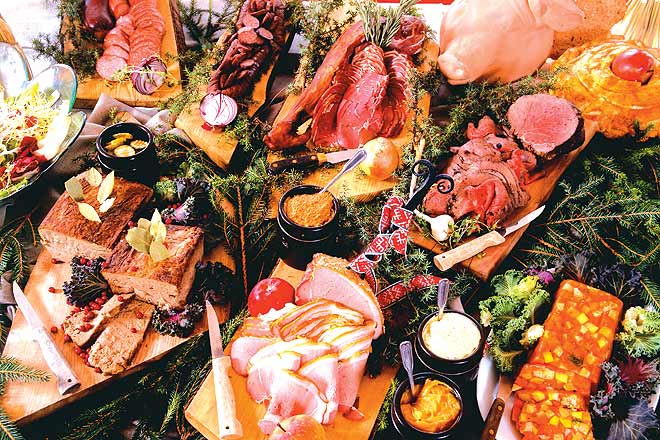“I’m just wild about smorgasbord,” warbled Elvis Presley in his 1966 movie Spinout. “I got a cravin’
It’s customary to begin with sill(herring), prepared in many ways: fried and pickled in vinegar and chopped onion, or marinated in mustard, or with red onion and sour cream. This is usually followed by other seafood: jellied eel, smoked fish, and raw picked salmon. A particular favourite is the gravad lax: salmon marinated in sugar, salt and dill, and served with a cold sweet-and-sour mustard sauce. Diners then proceed to the cold dishes: baked ham or liver paste, accompanied by vegetable salads. Hot dishes, often Swedish meatballs, are next in line, backed up by cheese and crackers, and perhaps a fruit salad.
The Swedes are known to be bullish on potatoes, which are eaten along with meat stews or sliced meat; grilled or baked trout, char or salmon; or herring. The potatoes may be boiled, baked, or sliced with onion and anchovy, then oven-baked with lots of cream.
There’s also usually a selection of types of bread, including sweet dark rye bread, tunnbröd (thin barley crispbread) and knäckebröd, a hard bread made from wheat or rye.
The smörgåsbord reinforces the importance of three distinct flavours in Swedish cuisine: the sour, the salty and the sweet. Rather than compete, the nuanced flavours balance one another. Yet that sense of balance doesn’t always manifest itself in the diners: some kings just went “wild about smorgasbord.”


